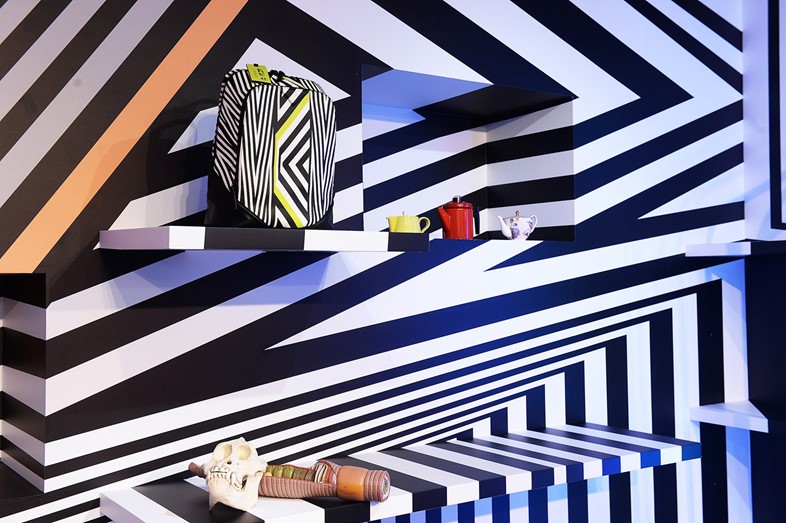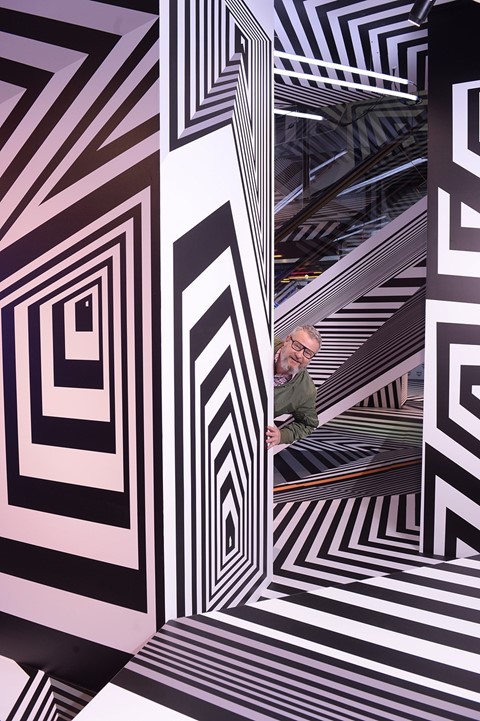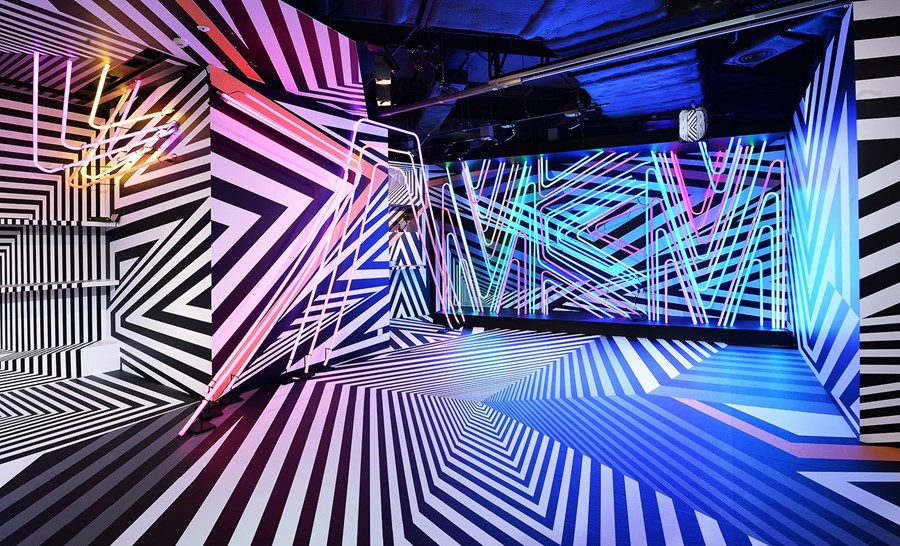AnOther explores the dynamic Tobias Rehberger-designed MCM store operating as a satellite exhibition space during Hong Kong's Art Basel
If you aren’t an art buyer, there is a slightly bizarre feeling that accompanies a trip to Art Basel. While the experience offers the opportunity to explore the works of some of the world’s greatest artists all temporarily installed in one place, bumping into Jay Jopling mid-way through an executive-looking phone call while exploring his transplant incarnation of White Cube only serves as a reminder that you aren’t the customer that the gallerists are courting: their targets have slightly deeper pockets. Ordinarily, the only people buying Tracey Emin are picking up postcards; at Basel – whether the original version is situated on the Rhine River, the hyper-hip one on Miami Beach or now, the four-year-strong Hong Kong equivalent – people are actually stickering works of art.
Historically, many a fashion brand has fought to align themselves with the (both lucrative and creatively esteemed) art world. Now, to coincide with Art Basel Hong Kong, accessories brand MCM has elected to bridge the gap between those of us lurking around the gift shops and the people investing in big-name artistry, by offering a ready-to-wear collaboration with the renowned op-artist Tobias Rehberger: a series of leather goods first showcased within their Hong Kong flagship (temporarily transformed into an immersive presentation space) and then rolled out – in strictly limited-edition numbers – throughout the world. There are suitcases and pochettes, backpacks and stickers; in fact, one of the MCM directors even has her manicure designed in homage to Rehberger’s renowned razzle dazzle print. It is wearable art in its ultimate incarnation. “I’m interested in art as something other than what you have to travel to a museum to see,” said Rehberger. “I’ve always been interested in art as something in your everyday life, in bringing it somewhere else.” For a man whose most renowned works include a 406-metre bridge and installations in Madison Square Park, handbags seem to be a turn towards the microscopic – but one that, for MCM, has macro meaning.

It’s a fairly bold move to turn a shop that is ordinarily a money-spinning machine (in 2014, monthly sales at the store were over $3 million) into a faintly overwhelming exhibition space – all dizzying visual paradoxes and disorientating repetitive stripes – but one that thoroughly aligns with the heritage German brand’s new positioning as a catalyst for creativity. In a few months, MCM will be presenting as part of the ready-to-wear serving at London Collections: Mens, and their project with Rehberger is the culmination of 18 months of serious collaboration (he even helped pick out the zip fastenings for each of the pieces). But not only are MCM modernising their creative appeal, they are equally broadening their consumer base to reach a more European audience – “East meets West” seems to be the catchphrase du jour for the brand who have found unparalleled success in Asian markets since being acquired by a South Korean group in 2005. Now, by presenting a German artist in Hong Kong Art Basel (which, despite a 50% presence of Chinese artists, still seems unnervingly Eurocentric), they are consolidating their desire to make the same waves in their native homeland as they have overseas.
Funnily enough, Rehberger grew up during the brand’s European heyday, in Germany in the 80s, and his neighbour had a white Porsche whose leather interiors were stamped with the MCM logo. “MCM has created their brand identity by making patterns that only consisted of logo repetitions. I played around with that idea and reinterpreted it by redesigning the MCM logo, rendered it in stripes,” he explained. The result is a unison of the most iconic facet of MCM – its logo – with the Razzle Dazzle effect that won Rehberger the 2009 Venice Biennale, originally inspired by the dazzle camouflage designed by the British Navy during World War I. “It was originally made to confuse an object itself,” says Rehberger. “Normally camouflage works when you have something in the front that blends into the back, but this technique was invented to confuse an object or space in itself. That comes from an idea I'm very fond of in art, maybe that it’s not just something to look at, but more something to be with. Since, for me, this project is also a reflection on how we deal with shopping, how we deal with products, and how we look at an object, it makes sense.”

While the uniform of a gallerist is traditionally comprised of something more pared-back than the hallucinogenic stripes of Rehberger’s work – after a few hours touring the jam-packed satellite galleries of David Zwirner and the Gagosian, one of my colleagues remarked “well, now we know who buys all the Céline in the world” – there seems to be a distinct art-world appeal to MCM’s new offering. Yes, Nicki Hilton and an assortment of K-Pop celebs made it down to the collaboration’s launch party (plenty dressed in MCM-printed t-shirts), but so too did collectors in suits who were turning up to investigate the buzzed-about installation after a day at the fair. Rather than being lined with MCM classics, Rehberger had installed mostly-empty shelves with the occasional novelty teapot or scientific model, intended to confound the idea of what makes for a product itself. “There’s an artistic audience for it all, I guess,” grinned Rehberger. “But for the regular customers, there's always the idea that they might come in and think, what's going on here? Where are all the bags? And I like that.”
